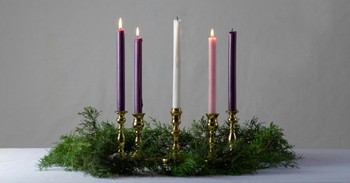The Shulamite woman, Solomon’s love and bride, is the superstar in his most famous musical. The Song of Songs or the Song of Solomon poetically and enthusiastically sings of her perfections (4:1-15; 6:4-10; 7:1-9).
Again, think “musical,” not a mere musical number. This poetic musical may have been performed (probably recited, possibly sung) in the world’s most glorious city, Jerusalem, for years during Solomon’s reign.
The audiences would have included ambassadors, merchants, and many others from throughout the known world. That world stretched from Asia to Europe and across the Middle East and northern Africa.
Upon arriving home, they surely told of the many splendors of Jerusalem, which may have included this musical.
Best Known
Until this point, the known world has been abuzz about Solomon’s marriage to Pharaoh’s daughter (1 Kings 3:1; 7:8; 9:24). No foreign king had ever married a daughter of Pharaoh.
This startling news placed Solomon on equal or higher status than Pharaoh, which is stunning yet understandable due to Israel’s vast power and wealth at the time.
What’s more, when Solomon finally takes the musical stage, 1:8 (NLT) or 1:9 (NIV), he instantly admires the Shulamite and favorably compares her to a prized mare standing adjacent to Pharaoh’s chariots. Is he hinting that she, not Pharaoh’s daughter, will be his best known and most loved wife?
What’s more, Solomon notes that the Shulamite is a “prince’s daughter” (7:1). Some scholars say she might have been Pharaoh’s daughter, but many scholars say this seems improbable.
The geography movements of the musical with its plentiful references to Lebanon (3:9; 4:8,11,15; 5:15; 7:4) seem to suggest that the Shulamite grew up in the exact opposite direction of Egypt — in the northern reaches of Israel.
She may even have been recommended by Hiram, Phoenician king of Tyre. This is the king who provided massive quantities of Lebanon’s cedar to Solomon and proved to be his closest ally in many ways.
My Perfect One
Near the beginning of the musical, the Shulamite describes herself as black, swarthy, dark, deeply tanned (1:5,6). The chorus of women describes her as “most beautiful among women” (1:8; 5:9; 6:1). Solomon himself says “how beautiful” she is (1:15; 2:2; 4:1; 4:7; 6:4; 7:1), and “how lovely” (2:14; 4:3; 4:7; 6:4).
Solomon also calls her “my darling” (1:9; 4:1), “a lily among thorns” (2:2), “my love” (2:7; 7:6), “my dove” (1:15; 2:14; 4:1), “there is no blemish in you” (4:7), “my bride” (4:8-12; 5:1), “my sister” (a common reference to one’s wife in ancient times) (4:9-10,12; 5:1), “my perfect one,” “pure,” “blessed” (6:9), and “the Shulamite” (6:13). (Some older translations read “the Shulammite.”)
Brings Peace
“Shulamite” possibly could mean a person from a town in Issachar, but much more likely simply means “peaceful.” Solomon calls her a “Shulamite” well after the wedding and honeymoon (6:13) and she later recalls how Solomon saw her as “one who brings peace” (8:10).
Solomon means “man of peace,” Jerusalem speaks of the city of peace, Salem means “peace” like today’s shalom, and the “peaceful” Shulamite are all based on the same Hebrew root consonants (s-l-m).
It turns out one of Solomon’s prized vineyards was in the northern reaches of Israel (8:11), possibly at the foot of Hermon and near the source of the Jordan River. This very well may point to that area as the place where the Shulamite woman grew up.
It’s possible they may have spent their honeymoon in her noble family’s home. Then they travel in his mighty-armed litter (3:6-10), only to return on occasion to spend more time back up north (4:7-8; 6:4).
It’s only after their wedding and return to Jerusalem that the Shulamite describes Solomon’s perfections in detail (5:10-16).
Most Beautiful
While Solomon progressively describes the Shulamite’s beautiful features from head to toe and introduces her gaze-worthy dance (6:13), Solomon can’t help rhapsodizing about her “two breasts” also described as twin gazelles, twin mountains, and twin clusters on a palm tree (4:5-6; 7:3,8).
The Shulamite herself talks about his attention to her fragrant breasts after one of their royal meals (1:12-13) and then his attention to her “mountains” (2:8-9,17; 8:14, bookends).
She also talks about her breasts “like towers” (8:10) after her brothers, (8:8-9), refer to an earlier time when her breasts had not yet grown.
Her imagery of mountains and towers speak of shape, etc., not size. These are her descriptions, not Solomon’s. As always, biblical similes and metaphors mean what the speaker (and writer) meant and intended to be understood. Think poetically, not literally.
The same holds true when Solomon tells the Shulamite that “Your nose is like the tower of Lebanon” (7:4).
Her other lovely features described by Solomon include cheeks, neck (1:10; 4:4; 7:4), eyes (1:15; 4:1) “behind your veil,” making his heart beat faster (4:9), overwhelming him.
Her lovely form (2:14), voice (2:14; 8:13, bookends), hair (4:1; 6:5, repeated stanza; 7:5), teeth (4:2; 6:6, second repeated stanza), lips (4:3; 4:11), mouth (4:3), temples (4:3; 6:7, third repeated stanza, including “behind your veil”).
Her tongue (4:11), garments (4:11), thighs (4:13; 7:1-2, NLT only), hips (7:1), navel (7:2), belly or waist (7:2), head (7:5), and stature (7:7).
A God Blessed Marriage
It’s the Shulamite woman, not Solomon, who poetically praises the LORD (YAH referring to YHWH) in 8:6.* She most likely was Jewish by birth. Otherwise, she would have had to convert to Judaism before she met Solomon. According to rabbinic tradition, Solomon wasn’t allowed to convert a future wife to Judaism.
The Shulamite woman is overwhelmingly beautiful yet remained chaste until Solomon married her. In that way, she is an ideal (and idealized) Jewish woman. In many ways, she carries on the tradition of the Lady Wisdom celebrated in Proverbs.
*Some, but certainly not all translations, include this. The Hebrew phrase, shalhebet-yah, consists of two Hebrew words that scholars interpret three ways.
For further reading:
What Is the Biblical Definition of Marriage?
How Can I Pray for My Marriage?
What Does the ‘Husband of One Wife’ Mean in 1 Timothy 3:2?
How Can Sex be a Sin and a Gift?
How Can I Pray for My Husband?
What Does it Mean to be a Proverbs 31 Woman?
Photo Credit: ©iStock/Getty Images Plus/fizkes





